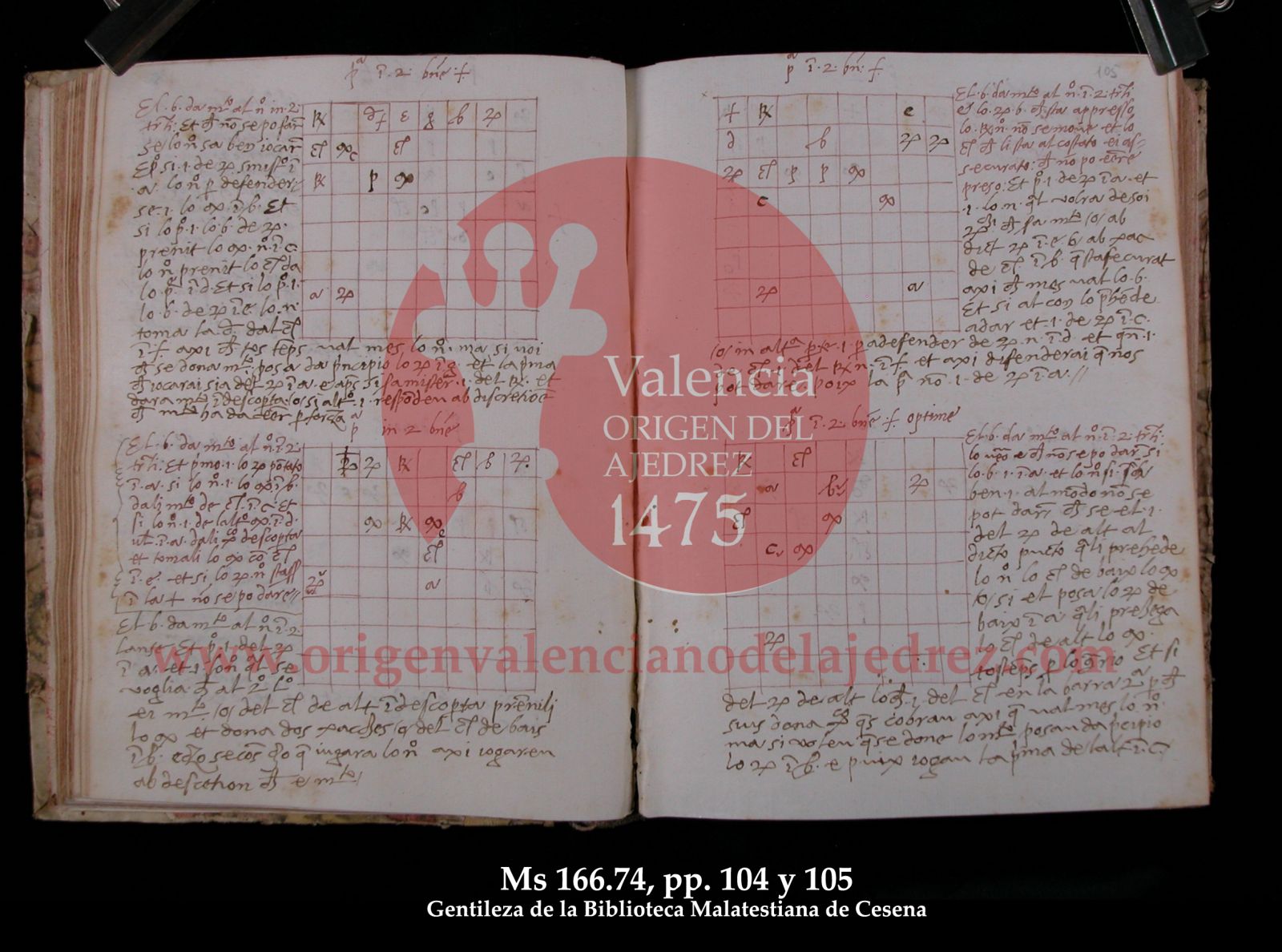Partners

Research has shown that these are the work of Vicent in his Italian period. The part in common was produced in c. 1502 and constitutes a sublime second treatise by this outstanding man from Segorbe (see introduction to the book of 2005).
Some of his positions are extraordinarily complex and are the result of the imagination of a true genius. The position below serves as an example; according to Averbakh it requires an expertise that is supposedly unattainable by a 16th century master but it is found nevertheless in the Perugia and Cesena manuscripts:
 |
The Cesena manuscript was discovered by Franco Pratesi in 1995 and is a veritable treasure and a monument to modern chess. It brought five centuries of waiting to an end with its problems copied from Vicent’s book (which is logical as this is the work of the man from Segorbe), several of which retain the original Valencian annotations as we can see below:
 |
The widespread use of terms in the Valencian language in use in the late 15th century can be appreciated: tos temps y tostemps, apres, pot, axi, val mes lo negro, de alt, de baix, posa, si voleu que se done, puix, etc. The same grammatical structures appear in identical problems in Lucena’s book (1497) and in many other arrangements that also originate in Vicent’s book, which confirms that the Valencian book was translated into Spanish.




